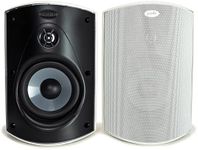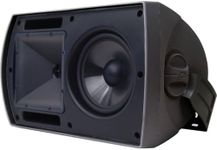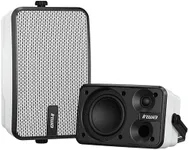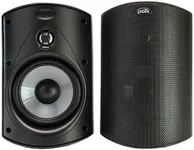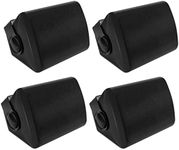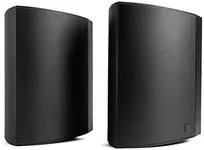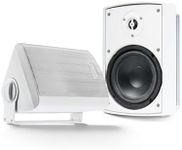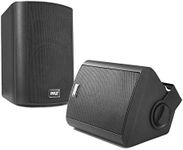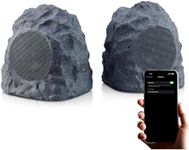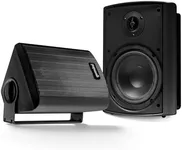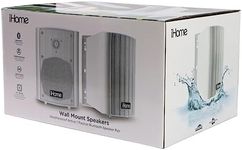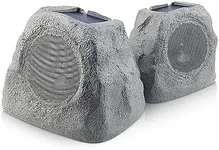Buying Guide for the Best Outdoor Wall Mount Speakers
Choosing the right outdoor wall mount speakers can significantly enhance your outdoor entertainment experience. Whether you're hosting a party, enjoying a quiet evening, or simply want to listen to music while gardening, the right speakers can make a big difference. When selecting outdoor wall mount speakers, it's important to consider several key specifications to ensure you get the best fit for your needs. Here are the key specs you should pay attention to and how to navigate them.Weather ResistanceWeather resistance is crucial for outdoor speakers as they will be exposed to various elements like rain, sun, and dust. This spec indicates how well the speakers can withstand these conditions. Look for speakers with an IP (Ingress Protection) rating. An IP rating of IPX4 or higher is generally good for outdoor use. If you live in an area with harsh weather conditions, consider speakers with a higher IP rating, such as IPX6 or IPX7, which offer better protection against water and dust.
Sound QualitySound quality is essential for an enjoyable listening experience. This spec includes factors like frequency response, sensitivity, and power handling. Frequency response indicates the range of sounds the speaker can produce, with a wider range generally providing better sound. Sensitivity measures how loud the speaker can get with a given power input, and higher sensitivity means louder sound. Power handling indicates how much power the speaker can handle without distortion. For outdoor use, look for speakers with a good balance of these factors to ensure clear and powerful sound.
Mounting OptionsMounting options refer to how the speakers can be installed on your wall. This is important for ensuring the speakers are securely and conveniently placed. Some speakers come with adjustable brackets that allow you to tilt and swivel the speakers for optimal sound direction. Consider the layout of your outdoor space and choose speakers with mounting options that suit your needs. If you plan to move the speakers occasionally, look for models with easy-to-use mounting systems.
ConnectivityConnectivity options determine how you can connect your audio source to the speakers. Common options include wired connections, Bluetooth, and Wi-Fi. Wired connections typically offer more stable and higher-quality sound but require running cables. Bluetooth and Wi-Fi offer wireless convenience, allowing you to stream music from your phone or other devices. If you prefer a clutter-free setup, wireless options might be more suitable. Consider your preferred audio sources and choose speakers with compatible connectivity options.
DurabilityDurability is important for outdoor speakers as they need to withstand physical impacts and wear over time. This spec includes the materials used in the construction of the speakers and their overall build quality. Look for speakers made from robust materials like UV-resistant plastics and rust-proof metals. Durable speakers will last longer and maintain their performance even after prolonged exposure to outdoor conditions. If you plan to leave the speakers outside year-round, prioritize durability to ensure they remain in good condition.
Size and DesignSize and design affect both the aesthetics and practicality of your outdoor speakers. Larger speakers generally offer better sound quality but may be more conspicuous. Smaller speakers are more discreet but may not provide the same audio performance. Consider the size of your outdoor space and how the speakers will fit into the environment. Choose a design that complements your outdoor decor while providing the sound quality you desire. If space is limited, compact speakers might be a better choice.
